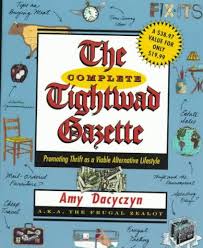SU - Top 5 Reasons Why Cast Iron Is The Greenest Choice For Non-Stick Cooking | Greenopolis
Dependable, that’s what cast iron is. It will last for centuries if properly cared for, and it has a natural non-stick surface that’s eco-friendly.
When I was a bride, my Granny gave me two of her cast iron skillets. A tiny, 6 inch one for making cornbread for two; and a 12 inch skillet for everything else. She told me all I’d ever need to be a good cook was those two skillets, a sauce pan, a stock pot and a casserole dish. And in a pinch, she said, I didn’t really even need the casserole. 
Cast iron has been around for hundreds of years. Before fancy teflon cookware was even a notion, cast iron was the standard for good cooks everywhere. Dependable, that’s what cast iron is. It will last for centuries if properly cared for, and it has a natural non-stick surface that’s eco-friendly. You can bake a pan of cornbread, scramble some eggs, make your favorite vegetarian black bean chili or sear a perfect steak. Cast iron cookware is the definition of all-purpose.
If you don’t already have a cast iron skillet, here are a few reasons to go to your nearest resale shop or garage sale and begin looking for one. You won’t regret it.
Top 5 Reasons Why Cast Iron Cookware Is So Green...
Cast iron is naturally non-stick. Properly seasoned (see below) nothing will stick to it. Cast iron eliminates the need for the costly, toxic chemicals used to create the non-stick surfaces in modern cookware.
Eco-easy clean up. All cast iron cookware requires for clean up is hot water and a stiff brush, so you avoid any harmful chemicals in detergent or solvents.
Cast iron can take the heat. It can withstand much hotter temperatures and will distribute the heat more evenly than traditional cookware. And since it holds heat well, you can use less energy to cook. Plus it’s perfect for outdoor cooking. Just remember that cast iron gets hot. so use an oven mitt when handling a hot pan.
It’s a great upcycling opportunity. Don’t ever worry about buying a cast iron skillet or other cast iron cooking vessel—like a dutch oven—from a resale shop or garage sale. Even if it looks rusty and dirty, it can be cleaned and re-seasoned and continue on cooking, forever.
It’s good for you. Cast iron cookware leaches small amounts of iron into food, so you get a little extra iron each time you use it. Almost anyone, especially women in their child bearing years, will benefit from this.
How To Properly Season Cast Iron Cookware
First, wash your cast iron cookware. This is the only time you will need soap to clean it, but you want to be sure you remove any dust or dirt. If you have a brand new cast iron piece, you will need to do this to remove the wax coating that is on it to keep it from rusting until it’s seasoned.
Coat your piece in some type of oil. Cast iron has a porous surface. The seasoning process will fill and smooth the surface to make it non-stick. Some type of oil is used to facilitate this process. I use Crisco vegetable shortening. Traditionalists would use lard. You can use plain old cooking oil, too, but you will get better results with Crisco. You want to coat the entire cooking surface with the shortening. Don’t glob it on, but every nook and cranny should have a nice, medium layer of shortening. Use about as much as you would use to coat a cake pan for baking.
Bake it in the oven. Next, you just pre-heat your oven to 350 degrees and put your cast iron pan in for an hour or so. After heating, turn off the oven and let it cool completely while still in the oven. Then it’s ready to go!
Heating the cookware creates the oxidation that prevents rust and makes the surface non-stick. Some cast iron users advocate heating the pan slightly before applying the Crisco to ensure that the pan is completely dry and to open the pores of the pan before seasoning. Not a bad idea, but remember cast iron gets HOT. Use oven mitts.
Newly seasoned cast iron will take on a dark brown coating. After long use, it will become glossy black. The non-stick properties of the pan will increase with time and use, so use your cast iron often. Remember, seasoning is a process. Even though cast iron can be used immediately after the first seasoning, your cookware will get better and better over time.
How do I re-season a used cast iron piece? If you buy a cast iron piece second hand, the process is still basically the same to re-season it, with one exception. First wash it in hot soapy water, as above. Then I put it in my oven on the highest setting (or on the self-cleaning setting if you have one) and let it bake for a few hours without any oil or shortening. This will remove any rust and the old seasoning. Let it cool, then follow the steps above to re-season.
Caring For Your Cast Iron Cookware
After each use, clean your piece with very hot water and scrub with a stiff brush to remove any particles left behind. Don’t use soap, it will remove the seasoning. After you scrub the pan, give it a light coating with some Crisco or vegetable oil and store it in the oven. Why? Because the oven will have less moisture, this will help keep your cast iron from ever rusting. Plus, each time you use your oven is an opportunity to further season your pan. Even if you take your cast iron pan out while using your oven, give it a light coating of shortening before putting it back in the warm oven. Especially if it’s a new piece, this will help develop the seasoning further.
I have treasured those skillets Granny gave me, and I’ve added to my collection over the years. A dutch oven in 1989 and a griddle just last year. At a garage sale in Los Angeles about 15 years ago, I bought a giant, deep skillet that turned out to be called a Texas skillet. (An omen, I guess since I live in Texas now. ) I love my cast iron cookware. I’m guessing you will, too.
















